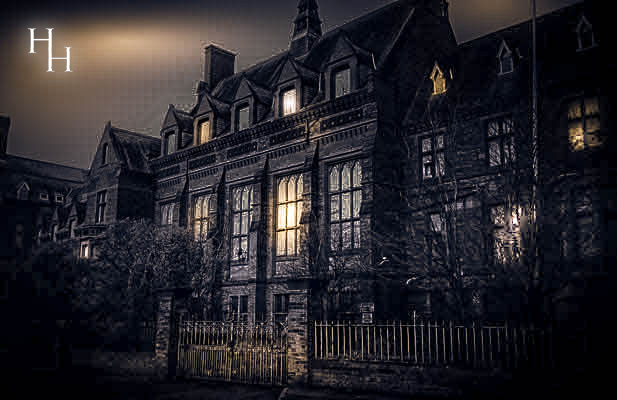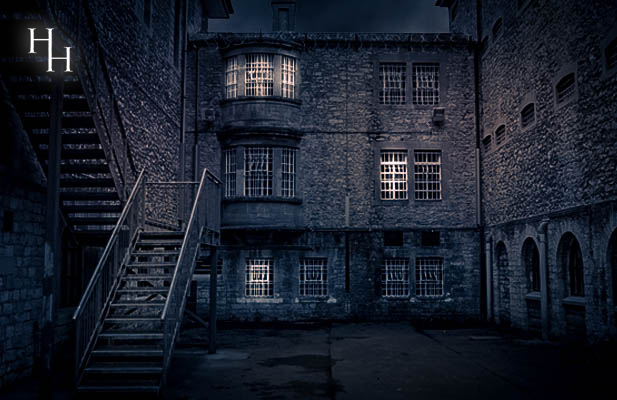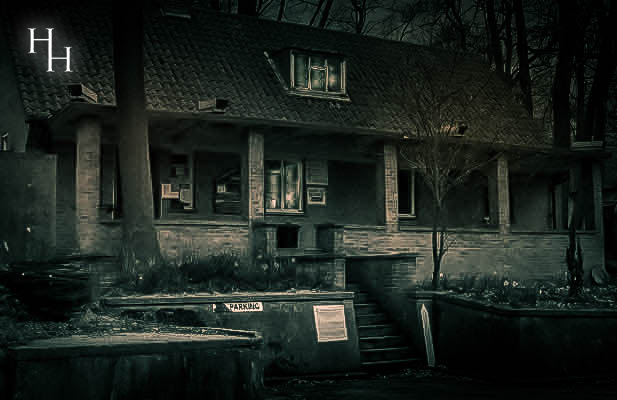Alton Towers - Staffordshire, Staffordshire
Sorry, we do not have any events for this location at the moment. Please keep an eye on our website for future dates.
By day Alton Towers in Alton, Staffordshire is an exciting and thrilling location to be in, people having the ultimate experience whilst enjoying the exciting attractions. However, by night this location takes on a whole new atmosphere, dark, sinister and forbidding. On Alton Towers ghost hunts your screams will turn from thrilling to chilling. This ultimate experience will take you into a bygone age as you ghost hunt around the amazing Towers and gives you the opportunity to meet the past residents of the building.
The Banqueting Hall is particularly terrifying and carrying out a vigil here will leave you in no doubt about the existence of ghosts and spirits. The old kitchen area is said to be haunted by the spirit of an old woman who hates men, making their experience here even more frightening.
Ghost hunting at Alton Towers ticks all the right boxes for those wishing to encounter paranormal activity but be careful about what you wish for as this is an extreme location.
Ghosts of Alton Towers
Alton Towers in Staffordshire is known Worldwide for its theme park, but the original Alton Towers Mansion (from which the park derived it's name) still sits within the grounds and has a reputation for being one of the most haunted houses in the UK. The Gothic shell of this once grand stately home is now home to the spirits and ghosts that walk its halls and the intensity of the activity witnessed here means that Alton Towers truly deserves its infamous reputation as one of the most frightening places in the UK to spend the night.
So much paranormal activity has been witnessed within the house ruins and surrounding gardens that Alton Towers has gained a well-deserved reputation within the Paranormal world as a truly haunted house. Dragging sounds from empty rooms, light anomalies seen with the naked eye, doors banging shut and moaning sounds from the Great Hall have all been experienced on ghost hunts here and on one occasion several guests were so terrified that they couldn't move as if paralysed with fear. Ghostly figures have been seen by whole groups of people and Poltergeist activity has been experienced in the form of torches being switched on and off, along with stones and objects being thrown from empty corners of the building.
Brief History of Alton Towers
Sadly, in the early 1900's Alton Towers Mansion began its demise, when a lack of funds prevented the family from taking care of all the maintenance on the house and it was sold in 1924. Its contents were stripped and auctioned off leaving an empty shell of what used to be a fantastic, stately home. With stories of tragedy and mystery, this building is the perfect location to explore the ghostly secrets of the past.
Over 3,000 years ago, the land was used as an Iron Age fort until in about 700 AD when a Saxon King called Ceolred Mercia set up his own fortress in the grounds. This which was besieged by King Ine of Essex in 716 AD. The bloody battle that ensued caused so much loss of life and so much bloodshed that it was renamed Slain Hollow which was marked by an oriental water garden.
Eventually after a turbulent history Alton Towers was passed to the Earl of Shrewbury in 1442 and redeveloped as a hunting lodge. By the Talbots who were close to the rulers of the country at that time. The famous curse is part of the Hex Theme at Alton Towers where the story of the old lady who asked for a coin was rejected by a member of the family. The curse stated that every time a branch of a particular tree fell, a family member would die inexplicably. Later that night there was indeed a storm where a branch fell and a family member died. The Earl decided to chain the tree to stop the branches from falling and this chain is still visible today.
Alton Towers is definitely one of the most haunted buildings in the UK. With its banqueting room where a door opens and closes on its own to whispers and footsteps being heard following you as you walk through the dimly lit areas. In the kitchen area you will often hear the cackling of what sounds like an old woman and on the top floor there are unnerving bangs coming from nowhere. The Banqueting room is also filled with the smell of stale alcohol and cigar smoke. Many believe that they have made contact with the Earl of Shrewsbury. Women are not welcome in certain areas of this gothic mansion and often complain of feeling very uneasy.
Additional History
Alton Towers is located near the village of Alton in Staffordshire, England. The former country estate was a former seat of the Earls of Shrewsbury. It is now a major theme park in the United Kingdom. In 2014, it attracted 2.9 million visitors, making it the most visited theme park in the United Kingdom and 7th most visited theme park in Europe. It employs in excess of 4,000 staff members during the summer months.
The area around Alton Towers has been occupied for more than a thousand years. Beginning in the Dark Ages, the site has been redeveloped several times from fortified encampment to castle and then country house.
An Iron Age fort was built on Bunbury Hill (c.1st-century BC) which is now occupied by the Alton Towers estate. In about 700 AD, the Saxon king Ceolred of Mercia built a fortress on the hill. But King Ine of Wessex besieged the site in 716 AD. The ensuing battle, which ended in stalemate, caused such a loss of life the place was called Slain Hollow (which later became the estate's oriental water garden.
In the 11th century, the site was refortified when a castle was built soon after the Norman Conquest. By the 12th century, the estate had been given to knight Bertram II de Verdun (died 1129/30), as a reward for his work in the Crusades. In 1318, the estate passed by marriage to Thomas de Furnival when he married Joan de Verdun. Furnival later died crusading in the Holy Land in 1348. In 1406 Sir John Talbot acquired the estate when he married Maud, the eldest daughter of Thomas de Furnivall, 3rd Baron Furnivall. Talbot became the second created Earl of Shrewsbury in 1442 after the title was forfeited by the third earl of the first creation in 1102. The Norman castle was destroyed during the English Civil War.
In the 17th century the former castle was redeveloped as a hunting lodge known as Alerton (or Alverton), which is the ancient name for Alton. The three-storey structure reused one of the castle's former towers, which remains part of the present-day building. The lodge was split into two properties, one of which was rented by a tenant. The other half was used by the Talbots as a summer residence, their main residence being at Heythrop Park in Oxfordshire. In 1801, Charles Talbot, the 15th Earl of Shrewsbury, began redeveloping the hunting lodge into a Gothic-style stately home. Over the next ten years, architects such as Thomas Allason, William Hollins and Thomas Hopper oversaw renovating the building. Work included the addition of a drawing room, dining room, chapel, library, long gallery, banqueting hall, conservatory and entrance hall. As a result the building was doubled in size. It also included the laying of the foundations for the Flag Tower. The house was renamed Alton Abbey, despite having no particular religious connection.
In 1814 Charles and his wife moved to Alton permanently. Work then began on turning the farmland around the house into one of the largest formal gardens in Britain. Several gardens were planted, including a Dutch garden and a rock garden. More than 13,000 trees were also planted in the landscaped parkland. The gardens in the valley leading down to the River Churnet hosted a variety of features. These included a Pagoda fountain which was fed by water from a spring at Ramshorn that passed through various lakes and pools, cast iron Garden Conservatories designed by Robert Abrahams, a "Swiss Cottage" that hosted a Welsh harpist and a copy of Lysicrates' Choragic Monument from Athens.
After the 15th Earl of Shrewsbury died in 1827, he was succeeded by his nephew John Talbot, 16th Earl of Shrewsbury, who completed the gardens and house started by his uncle. In 1831, the Talbots' principal residence in Heythrop burned down. The 16th earl then came to live at Alton permanently, bringing everything that could be saved from Heythrop. Noted architect Augustus Pugin designed a new entrance hall, banqueting hall and various other rooms, extending the house further. The property was renamed Alton Towers. From 1839, the grounds were opened to the public at various times of the year.
In 1852, following the death of the 16th Earl, Alton towers was briefly inherited by his cousin, Bertram. But when he died four years later at the young age of 24, all work on the house ceased (no further alterations would again be made to the property). As there was no direct heir to the estate, Bertram left the earldom and Alton Towers to a younger son of the Duke of Norfolk. But this was contested by Henry Chetwynd-Talbot of Ingestre Hall, a distant cousin of the late earl, who filed a legal writ to determine lawful ownership of Alton Towers. As the contents of the house were not contested, everything within the house was auctioned off in a 29-day sale of 4000 lots.
In 1857, Henry Chetwynd-Talbot became the 18th Earl of Shrewsbury, and two years later he acquired the Alton Towers estate. In celebration, the earl held a procession through Staffordshire on 13 April 1860. Beginning in Uttoxeter, it stretched over a mile with up to 40,000 people in the grounds of Alton Towers at the end. The Chetwynd-Talbots main home was Ingestre Hall and they only lived at Alton Towers while Ingestre was being rebuilt following a fire. The 19th Earl opened the grounds to the public at certain times of the year to help raise money to refurbish parts of the house.
During the 1890s, the 20th earl, Charles Talbot started the tradition of summer fetes at Alton. As well as the gardens, people were attracted with fireworks displays, balloon festivals, clowns, and exhibitions of instruments of torture. In 1896, the earl and countess separated. The earl went to live at Ingestre, where he later founded the Talbot Car Company, and the countess stayed at Alton. However, due to the marital situation, the house began to decay and the grounds became neglected because the earl did not pay much for their upkeep. In November 1918, the Earl decided to sell off the majority of the estate by auction. The countess continued to live on the estate for another two years after the earl died in 1921.
Spending the night in the haunted Alton Towers, it is not for the faint-hearted particularly with such a turbulent history






